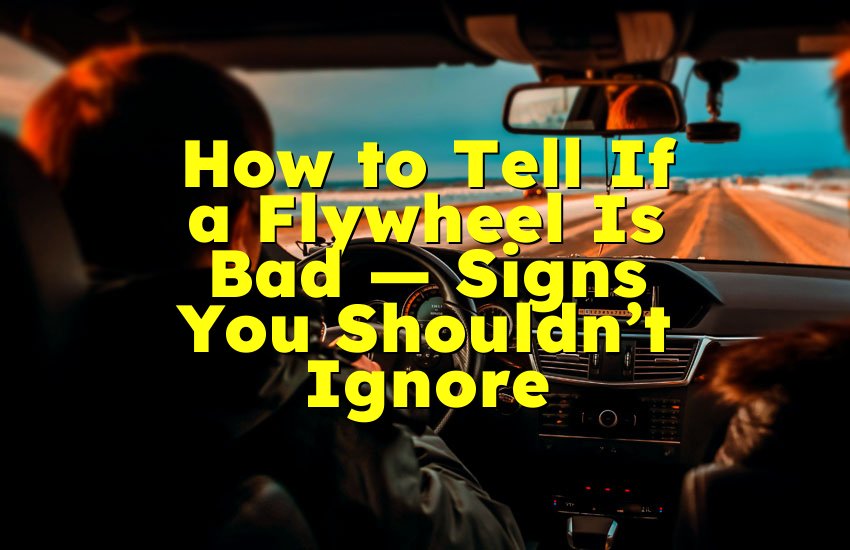As an Amazon Associate, I earn from qualifying purchases at no extra cost to you.
How Long Can You Drive With an Oil Leak? Expert Guide
Welcome reader! If you ever smell burning oil or see a dark spot under your car, you probably have an oil leak. In this article, you'll learn just how far you can drive with that leak safely. I once drove 50 miles before my oil light blinked—it taught me what to do next. In this article, I give you the exact answer and clear solution so you're not stuck later.
What Happens If You Drive With an Oil Leak?
When oil leaks, your engine loses the fluid it needs to stay cool and run smoothly. At first, the leak might be small and seem harmless. But even a small drip can lower oil levels over time.
As oil drops below the correct level, metal parts start grinding, heat builds up, and engine wear speeds up fast. Driving with low oil can lead to engine damage, overheating, or even total failure. If oil leaks onto hot parts like the exhaust or turbo, it can cause smoke or fire risk.
Many drivers don't feel problems at first. A tiny leak might let you drive short trips safely. But as the oil drops, warning lights will show, your engine might make odd noises, or your temperature gauge will climb.
Long drives with a leak are risky because the leak might grow worse, or oil might spray onto parts that get hot. You must check oil level before each drive after noticing a leak.
Usually you can drive up to 15‑25 miles after spotting a small oil leak if you keep a close eye on oil level and warning lights. But that is only a temporary solution to reach a safe spot for repair. If you continue beyond that without topping up or fixing, engine damage could start in those miles. So you must act fast: check oil, add oil if needed, and get the leak fixed.
- Oil leak lowers engine oil and risks damage
- Tiny leaks may let short drives, but risk grows fast
- You can drive about 15‑25 miles max after seeing a leak
- Watch oil level and warning lights
- Stop and refill, fix leak as soon as possible
How to Check Oil Leak Severity and Drive Safely Around It
First, park on a flat surface and let your engine cool. Look under your car for fresh oil spots. If you see drops or a puddle, note how big they are and how fast they grow. You can also check your engine bay for any damp spots or smell of burning oil.
Next, open the hood and check the dipstick. Wipe it clean, reinsert, pull it out and read the level. If it's below the safe mark, oil loss is serious. Top up with correct oil until it reaches the right level. If oil level is normal and leak is slow, you might drive a short distance—maybe 10‑20 miles—with caution.
But if oil level is low or leak looks fast and heavy, don't drive at all. Call for help or tow your car to a mechanic. Even if oil is full and leak is small, make only short, essential trips until the car is repaired.
Also look for oil spraying on hot engine parts. That can cause smoke or fire. If you notice that, call service immediately. Plan your route to avoid highways or steep hills that make engine strain worse.
- Park on flat, cool surface and inspect under car
- Check oil level with a dipstick, refill if low
- Slow leak + normal oil level = possible short trip
- Heavy leak or low oil = no driving
- Avoid tough routes; monitor for smoke or smell
Signs That Pushing On Will Damage Your Engine
As you drive with an oil leak, your engine may show warning signs. Listen for grinding, knocking, or rattling noises. Feel for rough or shaky running. Watch your dashboard: oil pressure light or check engine light may illuminate. Temperature gauge might climb, indicating overheating.
You may smell burning oil. That often means oil is dripping onto hot parts. Smoke under car or from exhaust may appear. These are urgent signs. Continued driving now can lead to warped engine parts, pistons seizing, or gasket failure.
If you notice any of these signs, pull over, shut off engine, and stop driving immediately. Let the engine cool before checking oil level. Call for tow or roadside service. Never push through these symptoms hoping they go away—they usually worsen fast.
- Grinding, knocking, rattling noises are warning signs
- Dashboard lights: oil pressure or check engine
- Overheating gauge rising
- Burning smell or smoke from under car
- Stop immediately if any appear
How Far Can You Drive Safely Before Repair?
If leak is minimal and oil level is stable, you might drive about 15 to 25 miles carefully. That distance covers most local drives to a repair shop or home. Make sure you:
- Check oil before leaving
- Drive slowly and smoothly
- Avoid hills, heavy traffic, or high speed
- Limit idle time or hard acceleration
- Pull over periodically to check oil level again
If leak is slower, some older cars manage up to 30 miles, but that's rare and risky. Beyond 25‑30 miles without topping oil, wear and damage become likely. Use that range only in emergencies like no mechanic nearby.
Remember, that is not advice to ignore the leak. Once you reach your destination, get repair as soon as possible. Driving any further or without attention invites costly engine failure.
- Minimal leak + good oil = drive ~15‑25 miles max
- Stop every few miles to recheck oil
- Drive slowly, avoid stress on engine
- No more than 30 miles even under shade conditions
- Repair leak ASAP after reaching safe location
What to Do While Driving With a Leak (If You Must)
If you really must drive, follow these tips:
Keep a spare quart of oil and funnel in your car. Before starting, fill oil to safe level. Stop every 5‑10 miles to check and top if needed. Listen carefully for engine noise or smell. Reduce speed to avoid high RPM or overheating.
Use smooth acceleration and gentle braking to ease stress. Avoid long idles or climbs. If engine temp rises even a little, pull over and rest.
Park in shade and keep engine cool between stops. If oil leaks onto exhaust, watch for smoke or flame – that's dangerous. Use a rag to clean visible oil near hot parts (once cooled), to reduce risk.
Call ahead to a mechanic while en route so repair is ready when you arrive. Do not extend the trip—keep it as short as possible. If you hit 10‑15 miles and oil usage is steady, consider stopping early and towing.
- Carry oil and funnel; check oil every 5‑10 miles
- Drive slowly and gently; avoid steep roads
- Watch engine temp and smell for smoke
- Clean away oil (once engine cools) near hot parts
- Call repair shop on the way; stop early if needed
Fixing the Leak: Quick Repair Options to Use Immediately
Once you've reached a safe spot or a mechanic, repair is your next step.
Some leaks have simple fixes. If gasket or cap is loose, tightening it may stop the leak. Oil filter leaks often stem from poorly seated or damaged filter, so replacing filter and sealing ring helps.
There are also stop‑leak additives sold in auto stores. These can swell seals or gaskets to slow or stop minor leaks. Use them only as a last resort or temporary fix. Make sure they are compatible with your engine and oil type.
A patch or epoxy seal around a crack in oil pan can buy you time but is not permanent. For more serious leaks (like cracked engine block or damaged lines), you must get professional repair. In some cases gasket replacement, line repair, or pan replacement is required.
Once fix is done, monitor your oil level and engine for days after to make sure the leak is truly stopped.
- Tighten caps and bolts if loose gasket
- Replace oil filter or sealing ring if needed
- Use stop‑leak additive as temp solution only
- Patch cracks only to buy time
- Major leaks require mechanic and part replacement
- Check oil level after repair for safety
How to Prevent Oil Leaks From Happening Again
Preventing leaks starts with regular engine care. Change oil on schedule and use correct grade. Inspect seals, gaskets, filter, and oil pan during oil change. Replace any showing wear or damage.
Keep engine clean. Dirt and grime can hide leaks until they worsen. Periodically clean areas around gaskets, valve cover, and oil filter, and inspect for wet spots.
Don't over‑tighten filter or drain plug. That can warp or damage seal and cause future leaks. Use proper torque and replace crush washer if present.
Listen to your engine. If you start to smell oil or notice spots under car, inspect immediately. Don't wait for big leak to form.
Finally, avoid aftermarket parts of poor quality. Use OEM or good replacement gaskets and filters. Quality parts fit better and last longer.
- Change oil often with correct grade
- Inspect seals, gaskets, filter every service
- Keep engine clean and check for damp spots
- Don't over‑tighten drain plug or filter
- Act early if smell or drip appears
- Use quality parts for better fit and performance
Final Thoughts
Driving with an oil leak is never ideal, but if it's small and your oil level is good, you may safely drive up to 15‑25 miles as long as you check oil frequently, drive gently, and head straight for help. The moment warning signs appear or oil drops low, you must stop. Fixing the leak quickly is the only real solution.
| Situation | Action |
|---|---|
| Small leak only, oil full | Drive max 15‑25 miles, check oil |
| Notice warning lights or noise | Stop immediately, call for help |
| Heavy leak or low oil | Do not drive further, get towed |
| Temporary fix added | Watch oil and repair soon |
| Routine maintenance | Prevent leaks with clean engine and proper parts |
Frequently Asked Questions (FAQs)
Is it dangerous to drive with an oil leak?
Driving with an oil leak can be dangerous because your engine loses the lubricant that protects moving parts. Even a small leak can slowly lower oil levels. Without enough oil, metal parts rub together and cause wear. Heat builds up, and your engine may overheat or seize. If oil drips onto hot parts, smoke or even fire can result. That's why driving more than a few miles without checking oil is risky. Always check and add oil if needed, and plan to fix leak quickly to avoid danger and costly engine damage.
Can I drive home if I notice a small oil leak?
Yes, you might be able to drive home if the leak is slow and your oil level is full. But you must drive carefully. Check the dipstick before leaving and after 5‑10 miles. Keep speed low, avoid hills and heavy use. Carry extra oil to top up if needed. Monitor for odd noises, smell, or warning lights. If any appear, stop right away. Only drive enough to reach safe help or home. You should never push more than 15‑25 miles in that condition. After reaching home, get the leak fixed to stay safe.
Do I need to call a mechanic immediately after finding a leak?
If you see oil dripping fast or oil level is low, call a mechanic immediately and don't drive the car. For a slow leak with full oil, you can make a short controlled trip to a trusted shop, but still contact a mechanic in advance. Let them know the issue so they can prepare. If you feel confident with a stop‑leak additive or tightening bolts temporarily, you might handle minor cases, but professional help is safest. Even small leaks can worsen quickly, so scheduling repair right away is always a smart idea.
Is it okay to use stop‑leak additive to fix oil leak?
Stop‑leak additives can help seal minor leaks temporarily by swelling gaskets or seals. These products are not permanent fixes and work only for small drips. If used too often, they may clog filters or degrade engine performance. Always follow the manufacturer's instructions and only rely on them as a short‑term solution. After using an additive, monitor oil level and engine health closely. Plan to get a proper repair soon. For serious leaks, additive won't work and may delay necessary mechanic inspection.
Can I drive at highway speeds with an oil leak?
Driving at highway speeds with an oil leak is not safe. High speeds mean higher engine RPM and heat, which worsen oil loss and engine wear. You also risk spraying oil onto hot parts like the exhaust, causing smoke or fire. Instead, drive slowly, take the back roads, and avoid long trips. Stop often to check oil. If you must cover longer distance, arrange for a tow so you don't risk catastrophic damage. Highway speeds increase risk quickly—even a small leak becomes serious at high engine stress.
Do I need to monitor oil level during the drive constantly?
Yes, you should monitor your oil level frequently if you must drive with a leak. Stop every 5‑10 miles to check the dipstick. If you see the level dropping below safe mark, top it up immediately. If oil drops steadily despite adding, it shows leak is worsening. Continuing to run without enough oil can damage engine fast. Checking often gives you time to stop before critical low. With regular checks, you reduce risk and ensure you don't push the car beyond safe range on that short drive.
Is it safe to use epoxy patch or sealant for a crack?
Epoxy patches or sealants may temporarily stop a tiny crack in the oil pan or engine housing. They can give you enough time to drive a short distance to repair shop. But these are only temporary fixes and may fail under heat and vibration. Clean the area before applying, let it cure fully, and don't drive long after. After patching, check oil often and don't push more than a few miles. Plan for a permanent repair soon, because epoxy can degrade and leak later.
Can I prevent oil leaks by regular car service?
Yes, regular car service is the best prevention for oil leaks. Changing oil on schedule, using proper grade, and changing filters keeps seals tight. Mechanics inspect gaskets, oil pan, filter, and plug every service. Replacing old seals before they leak saves trouble. Also, keeping engine clean helps you spot small leaks early. Use proper torque on filter and drain plug so seals don't warp. Quality parts fit better and last longer. Good maintenance stops leaks before they start and keeps engine happy.











